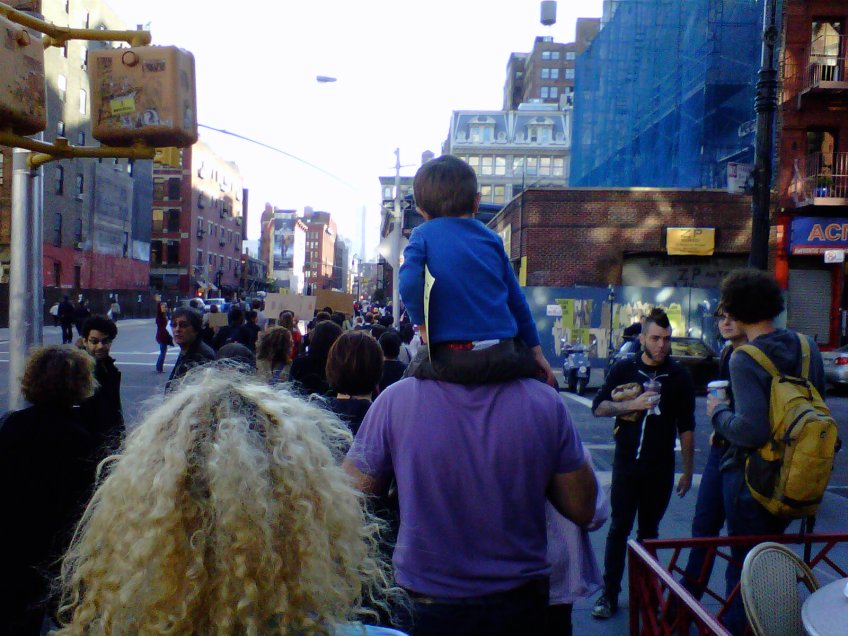Since Occupy Wall Street began on September 17, the ongoing series of demonstrations has quickly gained attention locally, nationally, and globally, sparking many different opinions, but only the opinions from anchormen and reporters have been heard.
In order to be fair, On October 5, some protesters, cameramen, and even celebrities given the chance to reveal their opinions on Occupy Wall Street.
"I really like what they are doing," John Quick said as he stood at the east side of Zuccotti Park handing out copies of the first issue of Occupy Wall Street Journal. That same morning, Quick hopped on a bus from North Carolina to New York City to join other protesters. "I think they are making a good impact."
Unaware of Quick's opinion, two men in dress suits standing just a few feet away from Quick felt differently.
"If they really want to make an impact they need to be more organized," one of the men said. As they both continued to observe the flyers and posters taped on the floor that read "we are the 99 percent" and "the 99 percent serve the 1 percent," Quick shook his head in disagreement.
Shortly after, the two men entered Zuccotti Park and passed by a large crowd of people surrounding actor and political activist Mark Ruffalo. Only the third celebrity to have physically displayed support of Occupy Wall Street at Zuccotti Park, reporters and cameramen asked him questions one after another.
"I am completely behind the protesters," Ruffalo announced.
The majority of the crowd cheered loudly while others quietly snapped photos of the celebrity. A cameraman who was filming the incident, cracked a smile, yet shook his head. When the cameraman completed filming, he was asked what are his opinions on Occupy Wall Street, but he could not give an answer.
"I'm really sorry, but I could get in trouble," the cameraman responded.
Towards the west side of Zuccotti Park, Skyler Norris leaned against a tree as he ate some food that he had picked up at the food station. "I have been here since Saturday," Norris said. "I won't be leaving any time soon."
Across from him, three large, white vans are parked on the street. A group of men and women sat in front of the vans that read either CNN, CBS, and NBC Networks, observed the ruckus in Zucotti Park as they ate their lunch. Many of them had black expressions, others showed some type of expressions. When asked what are their opinions of Occupy Wall street, the men and women gave a similar answer to what the cameraman said.
"We're not allowed to speak to you," one of the men said. "But if you find one of our reporters, they might be able to speak to you."
In the end, only protesters and actors were able to reveal their opinions, but it seems the cameramen wanted to, but just could not do it.





















